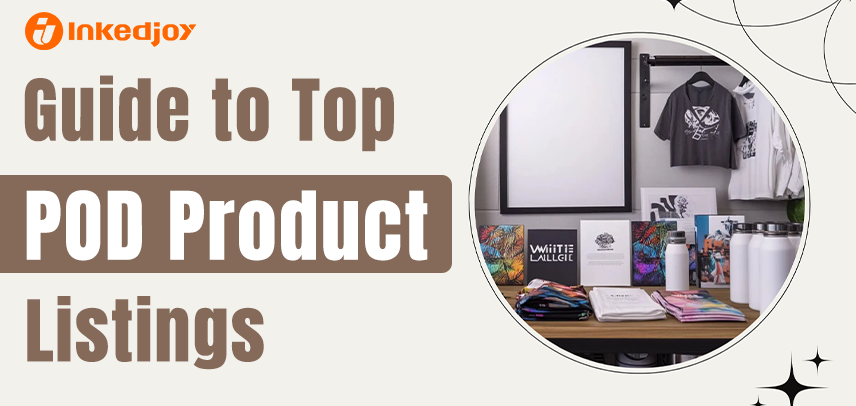
Step-by-Step Guide to Creating High-Quality POD Product Listings That Convert
Understanding Your Target Audience First
Creating profitable product listings starts with knowing exactly who will buy your designs. Successful POD sellers spend time researching customer demographics, interests, and shopping behaviors before writing a single word of product copy.
Check out what people are saying about your competitors' products to see what they like and dislike. Pay attention to repeated comments about things like size, material, design, and shipping. This info is super helpful for figuring out how to make your products stand out in a good way.
Think about how seasons and cultural events affect what people buy. You'll need different messages for things like holiday designs, graduation presents, or summer clothes. Launching products when they're most relevant for the season can really boost how many people see them and how interested they are.
Crafting Compelling Product Titles
When a customer has a lot of choices, the first thing they see are the product names. A good title should have the right buzzwords and be clear and catchy so that people know right away what's great about your product.
Use the Right Keywords
To begin, think of the things that people actually type in to find what you sell. Most of the time, simple words like "Custom Men's Shirts" work better than fancy words that are hard to understand. If it makes sense, give specifics like the style, the event, or the person it's for.
Keep It Short and Sweet
Make sure your titles are short and to the point, but still include important info. Titles that are too long and stuffed with keywords can get cut off in search results and look like spam. Try to keep them under 60 characters so they show up completely on different devices and websites.
Experiment with Different Titles
Try out different versions of your titles to see what gets the most clicks and sales. Some products do better with titles that focus on the benefits, while others are more successful when they describe the design or materials.
Writing Descriptions That Sell
Product descriptions help turn a potential customer's first look into a sale. Good descriptions answer questions, point out the benefits, and make a connection with shoppers.
Start with the Best Part
Begin your descriptions with the biggest benefit or what makes your product special. People look quickly, so put the most convincing info first. Whether it's comfort, how long it lasts, or the cool design, start with what your customers care about most.
Answer Questions Up Front
Deal with common questions in your descriptions. Questions about size, material, how to care for it, and when it will arrive often decide whether someone buys or not. Clear answers make people feel more confident and less hesitant.
Use Words That Create a Picture
Use language that helps customers imagine owning and using your product. Instead of just listing what it has, describe how it feels, looks, and improves their life. This emotional connection can often lead to a sale.
Optimizing Product Images for Maximum Impact
Since customers can't touch or see your products in person, the pictures you use are super important. High-quality images show off your products and help build trust with buyers.
Use Clear and Simple Primary Images
Your main product photos should clearly show the item against a clean, plain background. Avoid anything that's too busy or takes away from the product. Make sure the lighting is good so the colors and design look accurate.
Show Multiple Angles and Close-Ups
Include photos from different angles and close-up shots that highlight important details. For clothing, show the front and back, as well as close-ups of the print, seams, and fabric. For accessories and home goods, show them in real-life settings to demonstrate how they're used.
Use Mockups in Realistic Settings
Think about using mockup images that show your products in everyday situations. A coffee mug on a kitchen counter or a t-shirt being worn can help customers imagine having the item in their own lives.
Adding Keywords the Right Way
Using keywords effectively helps people find your products without making your descriptions hard to read. Putting the right words in the right places helps customers discover your products naturally.
Research Your Keywords
Use tools to find out how often people search for certain words and how competitive those terms are. Focus on longer phrases that show someone is ready to buy, rather than general, popular words. Specific searches like "graduation gift for daughter" often lead to more sales than simple terms.
Use Keywords Naturally
Add keywords naturally in your titles, descriptions, and tags without making the wording sound strange. Search engines like content that reads well and includes relevant terms. Stuffing too many keywords in can hurt your sales and lower your search ranking.
Track How Your Keywords Perform
Keep an eye on how your keywords are doing and change your strategy based on what you see. Some words that sound good might not bring in much traffic, while other phrases might lead to a lot of sales. Regularly update your keywords based on real data to improve your long-term success.

Pricing Strategies That Drive Conversions
Pricing decisions significantly impact both visibility and profitability in competitive POD marketplaces. Effective pricing strategies balance competitive positioning with sustainable profit margins.
Research competitor pricing for similar products to understand market expectations. Price significantly above or below market rates without clear justification often reduces conversion rates. Customers expect reasonable value propositions that align with perceived quality.
Consider psychological pricing principles when setting prices. Prices ending in 9 or 95 often perform better than round numbers, while premium positioning sometimes justifies higher prices for quality-focused customers.
Test different price points to find optimal conversion rates for specific products. Some designs justify premium pricing due to uniqueness or quality, while others succeed with competitive pricing that emphasizes value. Data-driven pricing decisions typically outperform gut feelings.
Creating a Sense of Urgency and Showing Social Proof
To turn people who are just looking into buyers, you often need to overcome their hesitation. Using urgency and social proof the right way can encourage quicker decisions without being too pushy.
Use Limited-Time Promotions
Create real urgency with promotions that have actual deadlines or limited stock. But don't use fake countdown timers or “limited time” offers that never end, as this can make customers lose trust.
Highlight Positive Reviews
Show reviews and comments from positive customers on your product pages. This is one of many effective print on demand strategies to build trust, as people who aren't sure about a product can get social proof from people who have bought and liked it. Notes about how popular something is or how many have been sold can have an effect on what people choose.
Show Certifications and Guarantees
Display any relevant certifications, guarantees, or assurances about quality that address common questions. Info about how the products are made, the materials used, or your return policy can help customers feel good about buying.
Making Your Listings Mobile-Friendly
A lot of people shop online using their phones, so it's important that your listings work well on mobile devices to get the most sales. Your product listings need to look good and work smoothly on different screen sizes and touchscreens.
Make Sure Images Load Fast
Ensure your images load quickly and look clear on small screens. Big files that take a long time to load can make people leave your site. Optimize your images to load fast without making them look bad.
Use Short Descriptions
Keep your descriptions easy to scan with short paragraphs, bullet points, and clear formatting. People on phones often browse quickly, so long blocks of text can turn them off. Break your info into small pieces that work well on smaller screens.
Test on Different Devices
Test your listings on different phones and browsers to find any problems. Something that looks great on a computer might look broken or be hard to use on a phone. Testing regularly can prevent you from losing sales because of technical issues.
Converting Browsers Into Loyal Customers
Creating outstanding product listings represents just the beginning of building successful POD businesses. Selecting the appropriate foundation from the diverse print on demand platforms is also a vital initial consideration.
Focus on exceeding customer expectations through quality products, reliable service, and genuine care for buyer satisfaction. Great listings attract customers, but exceptional experiences create repeat buyers who recommend your products to others and drive long-term business growth.



